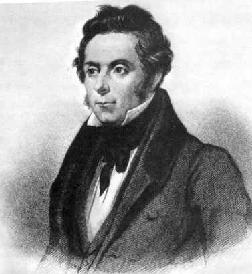- Walter Hancock
Infobox Engineer

image_size = 200px
caption = Walter Hancock
name = Walter Hancock
nationality = English
birth_date =16 June 1799
birth_place =Marlborough ,England
death_date =14 May 1852
death_place =
education =
spouse =
parents =
children =
discipline =
institutions =
practice_name =
significant_projects = Steam-powered road vehicles
significant_design =
significant_advance =
significant_awards =Walter Hancock (16 June 1799,
Marlborough ,England - 14 May 1852) was an Englishinventor of the Victorian period. He is chiefly remembered for hissteam powered road vehicles, but also received a patent for preparing and cutting indiarubber into sheets. He was the younger brother of Thomas Hancock, the inventor of rubber mastication who is also claimed by some to be the inventor of rubbervulcanization .Hancock's steam buses
Between 1824 and 1836, Hancock constructed at his Stratford works in East London a number of steam road vehicles, one of these being a three-wheeled four-seater car. In 1827 Hancock also patented a steam boiler that would split rather than blow so that the passengers being carried on his steam vehicles would be able to travel in safety.
In 1829 he built a small ten-seater bus called the "Infant", with which in 1831 he began a regular service between Stratford and London. This vehicle was made famous by its later revenue-earning journeys from London to
Brighton , which were a British first, and also demonstrated its usability by successfully ascending a frozen slope of 5 degrees where horse-drawn coaches were struggling. The vehicle was ultimately lost in an accident when the driver blocked thesafety valve in order to increase the starting pressure and the boiler exploded.On the 31st of October, 1832, the "Infant" took an experimental trip to Brighton, which was documented in Mr. Alexander Garden's "Journal of Elemental Locomotion. [ [http://www.firedragon.com/~kap/SteamTopics/londontobrighton.html First London to Brighton Run ] ]
On 22nd April 1833 Hancock’s steam omnibus "The Enterprise" (built for the London and Paddington Steam Carriage Company) began a regular service between London Wall and Paddington via Islington. It was the first regular steam carriage service, and was the first mechanically propelled vehicle specially designed for omnibus work to be operated.
The service was brought to an end due to a dispute between Hancock and the operators, and Hancock himself built and operated further steam buses between 1833 and 1840.
In 1836 he introduced the 22-seat "Automaton", and proceeded to run over 700 journeys between London and Paddington, London and Islington, and Moorgate and Stratford, carrying over 12,000 passengers in total and regularly travelling at speeds in excess of 20 mph.
By 1840, however, the development of steam-powered road vehicles had lost impetus and the heavy road tolls imposed by the
Turnpike Acts had turned inventors away from steam. Hancock was forced to give up the struggle, and the way was left clear for the operators of horse buses. [Evans, F.T. "Steam road carriages of the 1830s: why did they fail?" Trans Newcomen Soc., 1998, 70, 1-25]Hancock continued working with steam and supplied a light engine (similar to his steam road coaches) to the Eastern Counties Railway. The boiler consisted of separate chambers which greatly reduced the risk of explosion. [H.W. Dickinson "A short history of the steam engine"]
Hancock's "Enterprise"
Hancock's "Enterprise" steam bus had several features which were innovatory by contemporary standards. The engine was suspended on leaf springs along with the body of the vehicle, and the axle located with swinging arms as is still done today in the
Ford Explorer , with power being transmitted to the axle using chain drive. The rear axle was also used to drive a centrifugal blower fan which was used to force air into the firebox.The "Enterprise" required three operators in normal running. The driver sat at the front and was responsible for steering (via a steering wheel rather than a
tiller ) and controlling the speed via aregulator . A second operator occupied a small compartment to the rear of the vehicle between the boiler and the engine; this man was responsible for looking after the boiler's water level and selecting reverse gear when required. The final man stood on a platform at the rear and was responsible for maintaining the fire and braking, which was carried out by means of a large lever which acted directly on one of the rear wheels. Nothing is known about how these three people communicated. [http://www.locomobile.charitydays.co.uk/Trust/page11.html]ee also
*
History of steam road vehicles References
Further reading
* "Walter Hancock and his Common Road Steam Carriages" Francis James, 1975
External links
* [http://www.locomobile.charitydays.co.uk/Trust/page11.html Construction of a working replica of Hancock's "Enterprise"]
* [http://www.firedragon.com/~kap/SteamTopics/londontobrighton.html Contemporary account of a trip to Brighton aboard the "Infant".]Persondata
NAME= Hancock, Walter
ALTERNATIVE NAMES=
SHORT DESCRIPTION=
DATE OF BIRTH=16 June 1799
PLACE OF BIRTH=Marlborough ,England
DATE OF DEATH=14 May 1852
PLACE OF DEATH=
Wikimedia Foundation. 2010.
